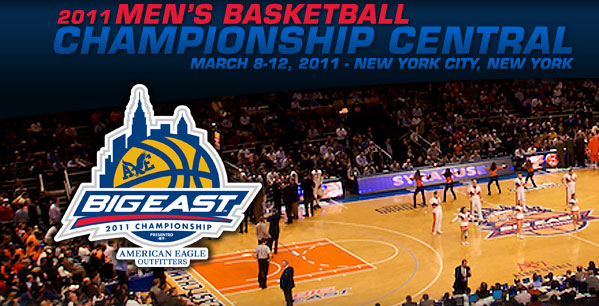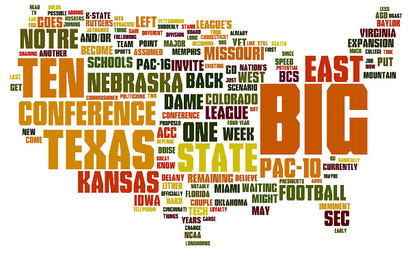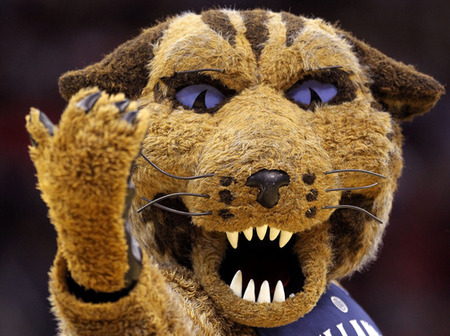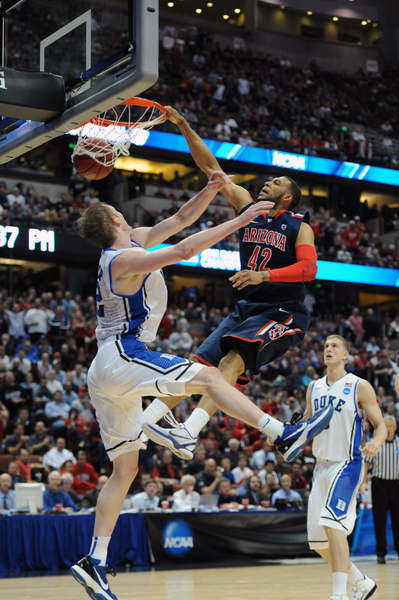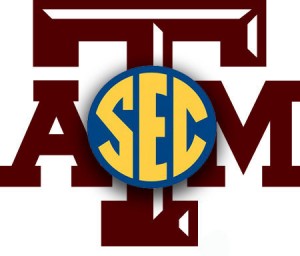Down Two Stalwart Programs, Considering the Big East’s Shaky Future
Posted by rtmsf on September 21st, 2011Brian Otskey is the Big East correspondent for RTC and a regular contributor.
The ongoing and complex conference realignment situation certainly has all folks involved with the Big East from Providence west to Milwaukee and south to Tampa worried and rightfully so. This is the real deal and the outcome of this round of consolidation and realignment will have a revolutionary effect on collegiate athletics for decades to come.
While I will discuss things from a Big East perspective in this piece, everyone must understand why this is happening. Football runs college athletics, end of story. This is about football, money, TV markets/contracts and the survival of individual universities. Nothing else. Any effects on college basketball are purely collateral damage. It’s nice that the top of the ACC will be tremendous in basketball but that is not why Pittsburgh and Syracuse decided to join, nor the reason why ACC commissioner John Swofford decided to expand his league for the second time in eight years. Pitt and SU bolted because it is in their best interests to remain viable and in a stable conference membership situation. They saw the writing on the wall and came to the conclusion that the Big East couldn’t last as a 16-team conglomerate of schools with conflicting interests. As for the ACC, it was a proactive move and the conference has now assured its place as one of the four “super-conferences,” a distinct possibility down the road. The ACC made this move out of self-preservation, a concept that is key in understanding all of this.
With that out of the way, let’s take a look at some scenarios regarding the future of the Big East’s 15 remaining members (if TCU doesn’t renege). All signs currently point toward Connecticut joining the ACC and Rutgers may soon follow the Huskies. The ACC needs two more members to get to 16 and while UConn seems like #15, the sixteenth team could be aforementioned Rutgers, Texas, Louisville, or even Notre Dame. Texas is an extreme long shot but you can never count them out considering they have the Longhorn Network. Louisville is a dark horse in this process because its football program seems to fit the profile of the other ACC teams but the Cardinals aren’t in an attractive TV market, nor is the university’s academic reputation up to snuff for the prestigious ACC but that is not going to be high on the list of drawbacks. A major red flag for the ACC will be Louisville’s 48th-ranked TV market according to Nielsen Media Research. I’d keep an eye on the Cardinals but I think it’s going to be Rutgers solely on the basis of television. The Scarlet Knights are attractive to the ACC because they can bring the New York City market directly into the fold. While Rutgers’ sports programs have never been anything to brag about, all that matters here is geography and television. The New York market (#1 in the country) includes every television set in northern and central New Jersey. It doesn’t matter if people in the professional sports-driven New York area care about Rutgers football or not because a certain percentage of college football fans will always watch. With more eyeballs in this area than any other, television revenue will be huge. The ACC is actively expanding its reach northward and by adding Rutgers and Connecticut it will achieve media dominance from Boston all the way down the east coast to Miami. Truly, the Atlantic Coast Conference.





























